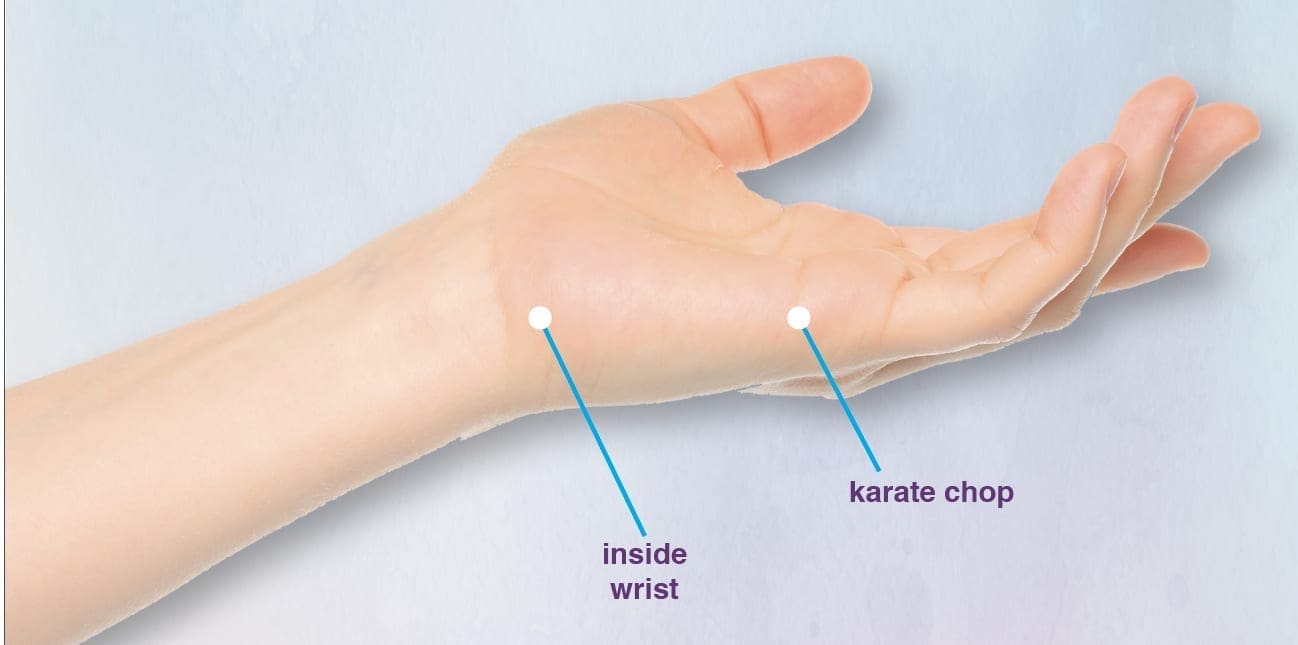Emotional Freedom Technique: Tapping to Wellness for Ourselves and Our Children

Emotional Freedom Technique
Are you up for a unique approach? Up to trying something that you have never done before? Giving it a whirl even though the rest of your family may think you have lost your mind? My guess is you will say, “Yes”. Do you know why? As a parent of a child with a disability, your mind is already used to trying new things. You have made thousands of adaptations and most of them without even realizing it. In addition, you have also, no doubt, stopped worrying about what other people think. You have learned that there are much more important things to care about.
I want to introduce you to Emotional Freedom Technique (EFT), also called tapping. I learned about tapping several years ago. I was taking a prosperity course at my church and this technique was incorporated into the class. Each week for ten weeks we tapped the words, I am prosperous, into specific areas of our body. With just a few practices, I began to experience a hopeful and uplifting feeling that has remained with me for a long time. Now, whenever my anxiety or a slight depression gets triggered, I go back to tapping.
I like tapping not only because it is effective, but also because it requires little time. I remember the days of raising my daughter, Alexandra, who had special needs. My most scarce commodity was time. I would get infuriated with people who wasted my time. Tapping will not waste your time. You can feel relief in five to ten minutes and longer sessions are helpful.

Also, as a parent, I was always seeking practices and approaches that were evidence-based. I wanted to know that there was a level of proof that it actually worked. There is mounting evidence that tapping is effective. Maybe that is why an estimated 10 million people worldwide have used tapping. In controlled studies, it has been shown to significantly reduce the symptoms associated with the following ailments and conditions:
- PTSD
- Depression, generalized anxiety and other psychological symptoms
- Physical pain
- Elevated heart rate
- Food cravings
- Public speaking anxiety
- Limiting beliefs in our unconscious mind

Tapping is simple, painless, and you can apply it to yourself where and when you want. You begin by focusing on the negative emotion that is bothering you: a fear or anxiety, an unresolved problem, a limiting belief or bad memory, for example. While maintaining your mental focus on that issue, you tap using your fingertips into 10 energy points on your body, e.g. top of your head, between your eyebrows, under your chin. During the tapping you shift away from the negative emotion to state what you want instead. The video linked below will guide you.
If you are like me, you are curious about how such a simple technique can be so effective. The mechanisms are not totally clear. However, the findings from a ten-year research study at Harvard Medical School provide some clues. Imaging studies showed that the stimulation of certain points with acupuncture needles, in that case, reliably produced decreases of activity in the areas of the brain associated with fear, i.e. amygdala and the hippocampus. The additional component of memory activation with tapping is thought to significantly contribute to the effectiveness of the technique. Dr. Feinstein, a clinical psychologist who uses EFT in his own practice, states, ” EFT is unusually precise, rapid, and direct for shifting the neurological underpinnings of a range of psychological problems.”
Finally, could tapping hold promise for our children? When my daughter was very young I asked a prominent early childhood researcher about the known effects of multiple surgeries and hospitalizations on children. She looked at me perplexed and said, “We have no idea.” That question has remained with me all these years. Three decades later, there remains little research about our children’s stress levels. Regardless, we know that many children with disabilities experience high levels of stress and/or may experience trauma at some time in their life. That is why I incorporated tapping into my Moved to Learn program.
Perhaps we will discover that, when needed, tapping is able to bring our children great relief. I would love to hear about your personal experiences with tapping. Note: Tapping may not be suited for all children. Practice with just a few taps to gauge your child’s reactions.![]()
Learn How to Tap: Emotional Freedom Technique Video
Paula Petry, PhD. Paula has her doctoral degree in special education from the University of Miami. Paula is the founder and honorary advisor of Parent to Parent of Miami. Paula attended Harvard’s Executive Leadership program and developed leadership programs for students and parents. She is a Light Body practitioner through the Four Winds Society and studied arts in medicine at the University of Florida, Shands Hospital.
You May Also Like
- 11 Reasons Why You Should Try Mindfulness Meditation and How to Do It!
- Staying Calm While in the Chaos of the Storm
- What Is Emotional Intelligence and Why Is It so Important?
- Tech for Developing Mental Strength for Life’s UPS and Downs
- The Science of Happiness
- Journal Writing Can Help You to Reconnect with Yourself
- Art Therapy: How It Works, the Benefits, How to Start
- Where’s the RESPITE?
- My Relaxing Escape
- Anxiety in Children and Adolescents
- 5 Steps to Help Your Child Manage Emotions
- Mental Health Is Not Something to Take for Granted: How to Manage Depression and Stress During the Holidays
This post originally appeared on our May/June 2016 Magazine



